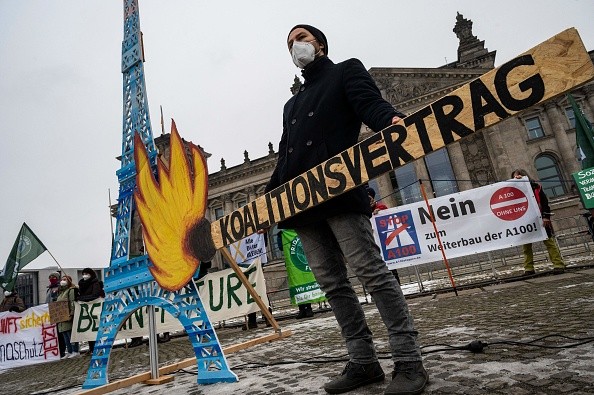When additional human-made pollutants, such as methane, nitrogen oxide, and particle pollution are added to carbon dioxide emissions, the image of how much warming is already "baked in" to the climate system changes.
Even if all emissions stop, the Earth will continue to warm, and it will be committed to achieving peak temperatures five to ten years before experiencing them.
All types of emissions shorten the Paris agreement's target
 (Photo : JOHN MACDOUGALL/AFP via Getty Images)
(Photo : JOHN MACDOUGALL/AFP via Getty Images)

In the Paris Agreement, countries agreed to keep global warming to 1.5 degrees Celsius or no more than 2 degrees Celsius.
As emissions rates fall, governments are looking at how much greenhouse gas may still be produced while staying below these temperature objectives, which are considered the upper bounds for avoiding the most catastrophic climate consequences.
A new study headed by the University of Washington analyzed how much warming has already been promised as a result of previous emissions.
While prior studies focused on carbon dioxide, the current study also considered other pollutants, such as methane, nitrogen oxide, and aerosols like as sulfur or soot.
Even if all emissions stop on that day, the globe has a two-thirds risk of reaching 1.5 degrees Celsius by 2029 under a moderate future emissions scenario, according to the report.
By 2057, there's a two-thirds likelihood that the globe will at least briefly exceed 2 degrees Celsius warming if humans continue on their current emissions path.
Nature Climate Change released the findings on June 6.
According to lead author Michelle Dvorak, a UW Ph.D. student in oceanography, it's critical for us to look at how much future global warming may be averted by our actions and policies, and how much warming is unavoidable due to historical emissions.
The researchers utilized a climate model to investigate what would happen to Earth's temperature if all emissions were suddenly halted each year from 2021 to 2080, following eight distinct emission trajectories.
While it is unrealistic to switch off all human-caused emissions overnight, the authors claimed that it is an unequivocal "best-case scenario" that sets a lower limit for future warming.
Previous studies of this kind looked at carbon dioxide emissions and found little to no "warming in the pipeline" if emissions were stopped.
Shorter-lived greenhouse gases like methane and nitrogen oxide, as well as particle pollutants like sulfur and soot, are included in the current study.
Temperatures will still exceed
Dvorak believed that the amount of future warming that will occur solely based on what we've already released has yet to be fully disentangled, as per Environment Journal.
Different emissions can cause the globe to warm or cool. Particulate pollution reflects sunlight and cools the environment, counteracting global warming.
These particles sink far faster than heat-trapping greenhouse gases out of the atmosphere.
Stopping all human emissions at the same time results in a transient temperature increase of around 0.2 degrees Celsius, which occurs suddenly when emissions halt and last about 10 to 20 years.
This paper examined the unavoidable temporary warming, which is critical when considering components of the climate system that respond quickly to global temperature changes, such as Arctic sea ice, extreme events like heat waves or floods, and many ecosystems, according to co-author Kyle Armour, a UW associate professor of atmospheric sciences and oceanography.
Related article: Spread of Dengue Caused by Climate Change: Singapore Warns the World
© 2024 NatureWorldNews.com All rights reserved. Do not reproduce without permission.


![Climate Change is Reducing Dust Levels Worldwide as Arctic Temperature Warms [Study]](https://1471793142.rsc.cdn77.org/data/thumbs/full/70320/280/157/50/40/climate-change-is-reducing-dust-levels-worldwide-as-arctic-temperature-warms-study.jpg)

![Tsunami Hazard Zones: New US Map Shows Places at Risk of Flooding and Tsunamis Amid Rising Sea Levels [NOAA]](https://1471793142.rsc.cdn77.org/data/thumbs/full/70325/280/157/50/40/tsunami-hazard-zones-new-us-map-shows-places-at-risk-of-flooding-and-tsunamis-amid-rising-sea-levels-noaa.jpg)
